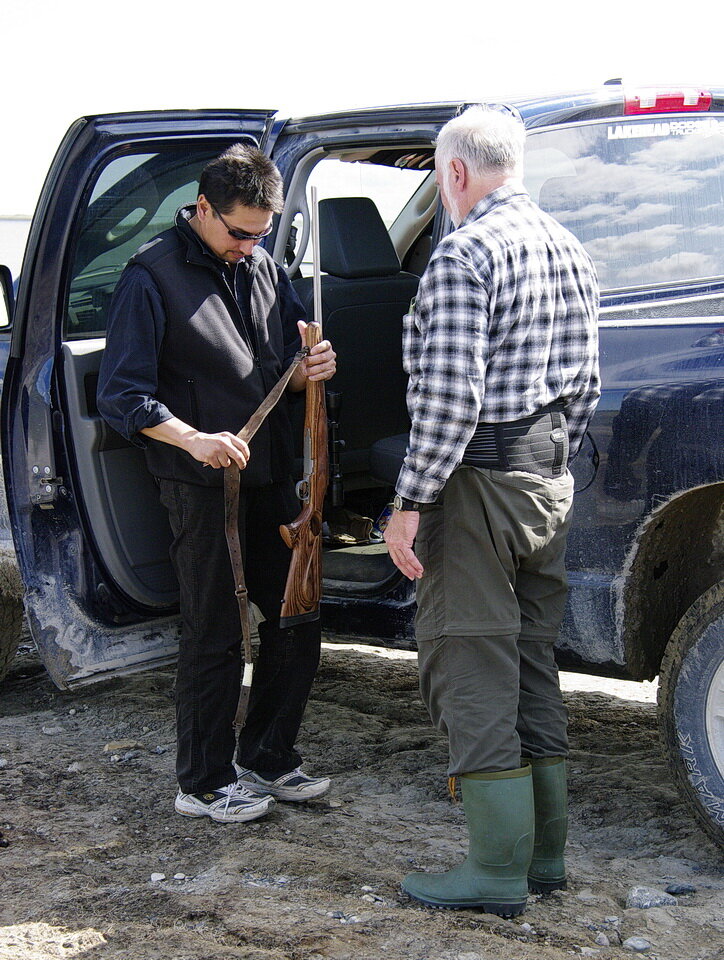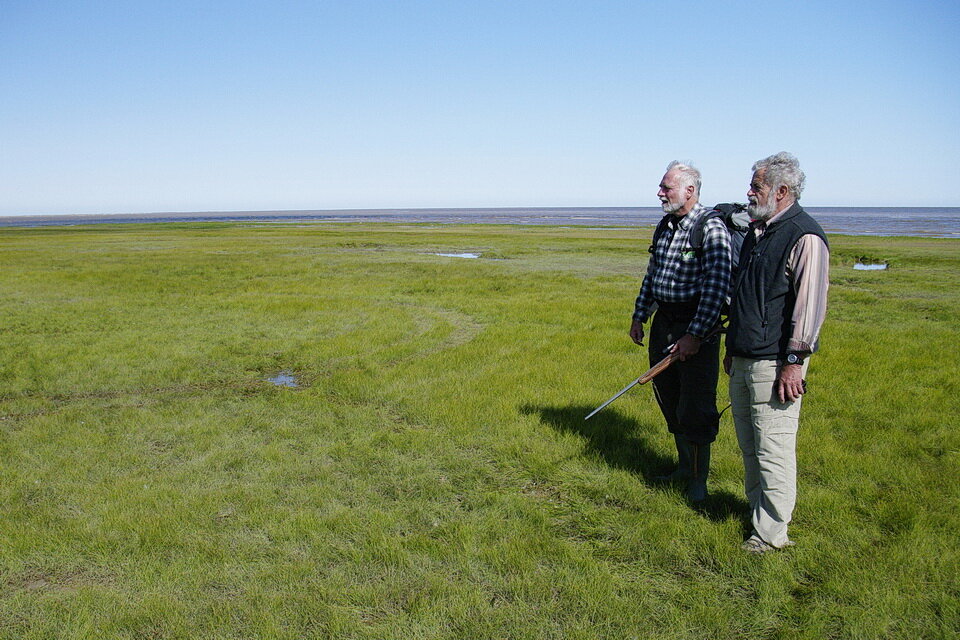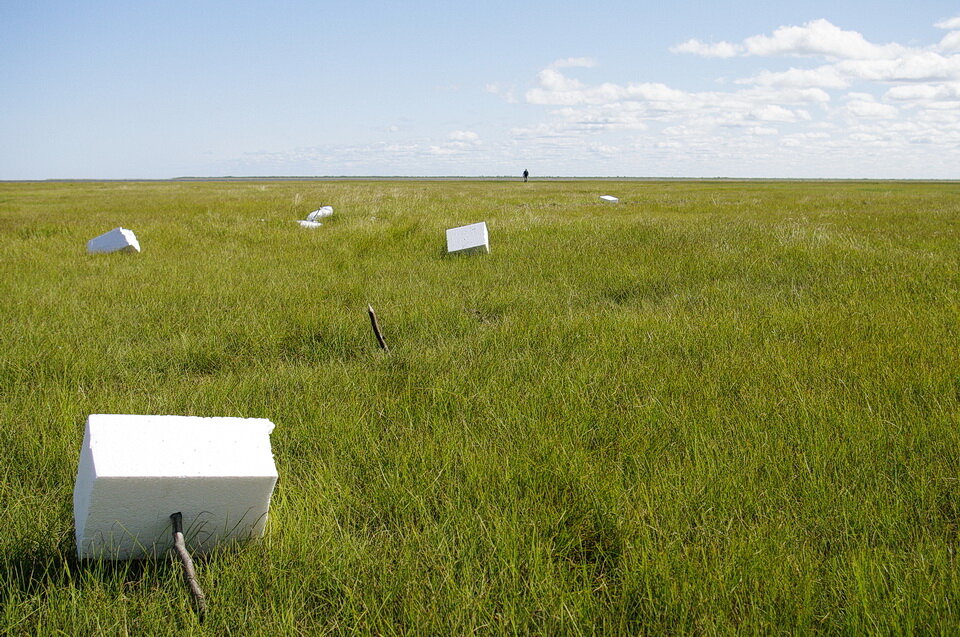Far North Rambles #38: Polar Bears
A sweeping herd of majestic Polar bears! I have a healthy respect for polar bears. They are the apex predator in the far north and they will hunt humans, under the right circumstances. Every time we visited with Washaho Cree Nation (Fort Severn) or Weenusk First Nation (Pewanuck), both close to Hudson Bay, we tried to get out on the land to look at, and photograph, the landscape. Always, we were aware that we were visitors in the First Nation homeland AND polar bear country.
The first time we visited Fort Severn, it was early December. We asked if it was acceptable to walk around the community at night. We were told “NO”. After a moment of silence, we learned there were polar bears near the community and it would be dangerous to walk around after dark. We complied!
Late one August, David Pearson and Bill Keller, both of Laurentian University, and I together visited Fort Severn. After our community business, we expressed our interest to walk along the Hudson Bay coast. Tommy Miles, Council member at the time, drove us to the edge of the coastal tundra. He suggested that we take a rifle for protection against the polar bears. Bill Keller was well versed in the use of rifles, so he and Tommy exchanged notes, and Tommy lent Bill his rifle (Photo 1).
Photo 1: Tommy Miles (left - Washaho Cree Nation) and Bill Keller (Laurentian University) exchanging notes on the use of Tommy’s rifle, which Tommy lent us as protection against a polar bear attack on the coastal salt marsh, beside Hudson Bay, north of Fort Severn. Photo by Andy Fyon, Aug. 27, 2010.
We left Tommy and walked off onto the coastal salt marsh. We were excited to be on the Hudson Bay coastal tundra again, north of the tree line (Photo 2). We started out being alert to the presence of polar bears, but we quickly became immersed in the new-to-us sub-Arctic plants, geology, the thousands of snow geese, and the landscape. We stopped thinking about the bears.
Photo 2: Waking along the salt marsh located on the south shore of Hudson Bay, north of the tree line, north of the community of Fort Severn, in the homeland of the Washaho Cree Nation. Photo by Andy Fyon, Aug. 27, 2010.
Suddenly, Bill quietly sounded an alert! What are those? There were white spots about a kilometer away on the open coastal lowlands - in the same area as us. They must be polar bears! Not just one, but maybe 10, or more. A herd of polar bears “sweeping majestically across the Serengeti”. Oops, wrong landscape and they were not sweeping. They were all huddled together, resting. No, they were planning! They were planning how to attack us. One group planned to move along our right flank to block our escape into the freezing waters of Hudson Bay. A second group planned to circle our left flank, blocking our escape across the salt marsh into the stunted trees. The third group planned to attack us from the front, hoping to separate us into three isolated humans. Separated humans are easier to attack.
Bill paused for a long time, looking through the rifle scope. He quietly said “maybe they are not polar bears”. What? If not bears, then what. We decided to carefully walk toward the white spots. After all, a good defense is a strong offense, right?
Bill stopped again and looked through the rifle scope for a long time. Then he laughed. “Those aren’t polar bears. They are white goose decoys - and there are lots of them”. After a great sigh of relief, and an appropriate amount of male nervous laughter, we marched defiantly towards the goose decoys, ready to take on any combative snow geese.
Yes, those white spots were decoys - creative ones at that. Some were made from Northern Store bags. Others were made of Styrofoam cases (Photo 3). A few were plastic decoys in the shape of a snow goose neck and head.
Photo 3: Some of the creative, white-coloured goose decoys that we saw on the salt marsh. From a distance, we were certain these were a herds of polar bears “sweeping majestically” across the salt marsh of Hudson Bay lowland, north of Fort Severn. Photo by Andy Fyon, Aug. 27, 2010.
We never did see a real polar bear on that trip, or any other trip before or after. The closest we came were some bear tracks close to the lookout tower (Photo 4). But, I admit, those creative goose decoys worked really well and got the full attention of three southern white guys!
Photo 4: What we assumed were polar bear track left in the sand by the observation tower, on the Hudson Bay lowlands tundra, north of Fort Severn, Ontario. The track was about 20 cm long, and if a polar bear track, was likely a young one. Photo by Andy Fyon, Aug. 27, 2010.
I still have a very healthy respect for polar bears. To this day, in my imagination, I can still transform a square, white, Styrofoam case into a ferocious polar.
Have A Question About This Note?
Andy Fyon, Nov. 27, 2020 (Facebook, Oct. 16, 2020)




